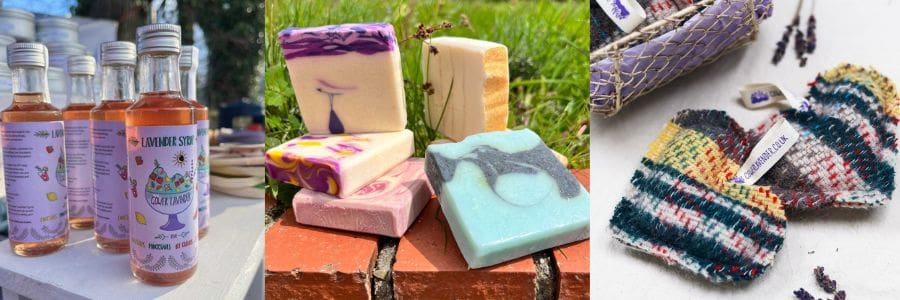In Britain our beautiful bumble bees are native, wild and wonderful, and one of the best and most efficient pollinators we have. Without bumble bees, many of our flowers and crops would struggle to survive. But many species of bumble bee are in decline, and they need our help.
That’s why we at Gower Lavender have decided not just to talk the talk about how much we love bees, but to walk the walk as well. First, we’re donating 10% of all our May sales to help bees (shop now).
But we’re going further still. Since we started growing lavender in 2017, we’ve put bees first by growing without pesticides and herbicides, by allowing weeds to grow around or near our lavender (many weeds offer vital food and habitat year-round for pollinators), and by harvesting the lavender late in the season after it’s flowered so that bees can feed from it all summer.
But now we want to go a step further. We have pledged to support the Bumble Bee Conservation Trust by pledging 10% of all the sales we make in May to help them in their vital work to protect bumble bees. We’ll also use our social media platforms and website to help raise awareness and educate people about bumble bees.

Know your bees
Did you know that 54% of UK adults think that bumble bees and honey bees are “the same”?
Do you know the difference? In the image above, the bumble bee is on the left, and the honey bee on the right. Honey bees are narrower, much less hairy and have a different body shape (with a visible abdomen, thorax and head), while bumble bees are fat, furry (and fabulous).
In fact, honey bees are domesticated and usually kept by beekeepers, while bumble bees are wild.
There are many different kinds of bumble bee, each with different lengths of tongue, and so they tend to visit a wide variety of flowers of all shapes and sizes. Meanwhile there is only one species of honey bee in Europe, and they have a short tongue and can only feed from open flowers. That makes bumble bees a key pollinating species in the UK, and worth our support.
Think bee
One easy way to help bumble bees is to ‘think bee’ when you garden. Like us, bees need somewhere to live and enough to eat and drink.
The simplest way to achieve this is by letting an area of your garden go a little bit wild (ie, stop tending it!). That will allow native wildflowers like dandelions or thistles to grow – plants we’ve been trained to think of as weeds, but which are highly adapted to our environment, and which are packed with nectar and pollen for bees to eat.
Stopping mowing an area regularly will also mean there is longer grass and areas of undisturbed earth that are ideal nesting spots for bumble and solitary bees.
And going easy on the weedkiller (ie, stop using it!) will ensure there are safe areas for bees to forage without the risk of being poisoned.
You could also consider planting bee friendly plants, flowers or even trees in your garden, depending on space. There’s a brilliant guide here to ways you can help bees in your garden, even if you only have space for a window box or hanging basket.
Visit www.bumblebeeconservation.org for loads more resources and to find out how you can join us in our pledge to Bee the Change. Or visit our shop and to browse our bee-friendly goodies, and make a donation with every purchase.



